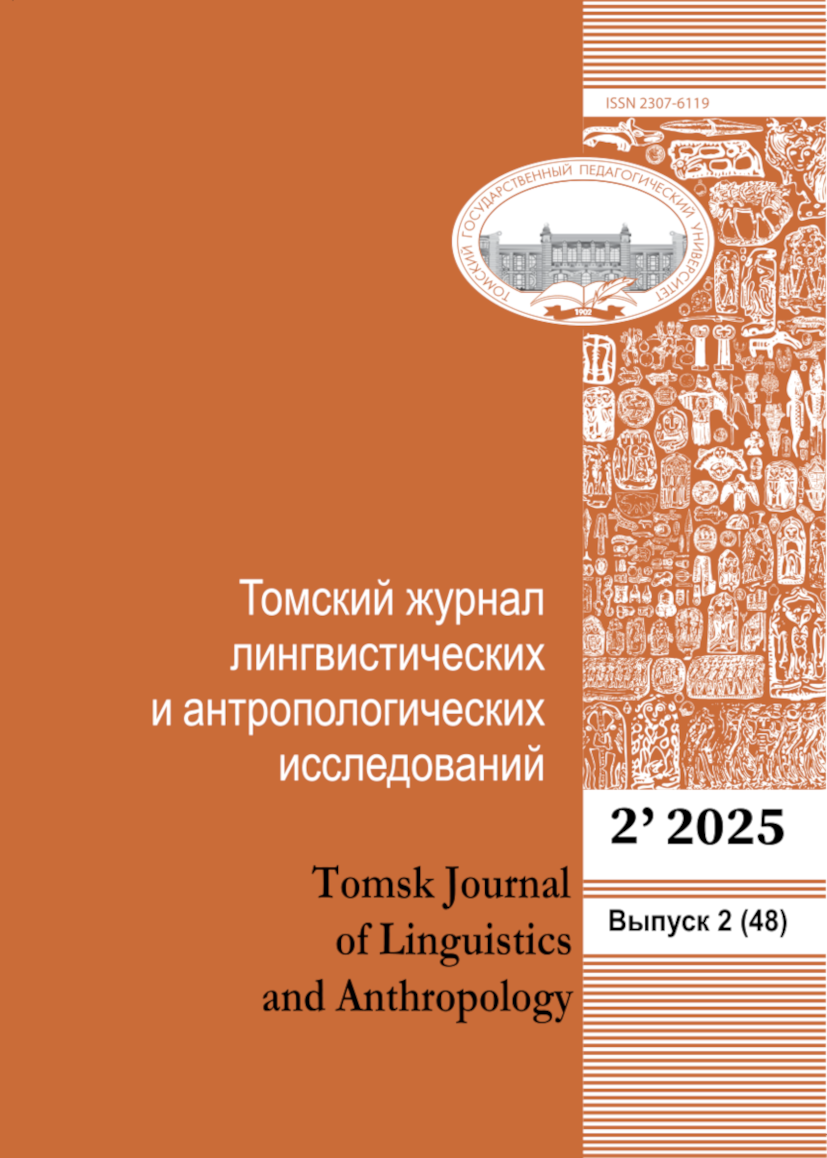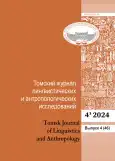No 4 (2024)
LINGUISTICS
Ethnocultural and Language Development of an Ethnic Minority in a Genetically Relative Environment (Field Study on the Oirats in Mongolia in 2024)
Abstract
The article deals with the cultural and linguistic dynamics in the development of the Oirat ethnic minority in Mongolia, who have lived compactly in a linguistically related environment for several centuries. This includes Oirat ethnic groups such as the Durvud, Torguud, Zakhchin, Myangad, Bayad, Uriankhai, Uuld, Khotgoid, Khoshuud, Khoyt and Khoton. The Oirat language belongs to the western branch of the Mongolian languages of the Altaic language family. It is an ancient written language. The Oirat script “Todo bichg” (clear script) was de-veloped in 1648 by the Oirat scholar Zaya Pandita. A characteristic feature of the language situation in Mongolia is that most languages belong to the Mongolian language family and are, therefore, surrounded by other closely related languages. The article aims to analyze the dynamics in the development of Oirat idioms in Mongolia under the conditions of a cognate environment in order to specify their linguistic vitality. Language contact between related languages can lead to the assimilation of the language of a smaller language community, usually into a dialect of the dominant language community. Rapid assimilation can occur for several reasons. Firstly, the psychological factor is decisive. As a rule, the speakers of the assimilating language have no psychological barriers, since they are in a culturally and linguistically related environment and are not subject to any moral or psychological pressure from the dominant group, the language change takes place almost unnoticed. Secondly, due to the genetic proximity of the idioms with which they come into contact, the minority languages are restricted in their range of functions, giving way to the dominant language and thus losing prestige. These linguistic processes can be clearly traced in the functional and structural development of the language of the Oirat groups in Mongolia. The article analyzes the language change of the Oirat people in Mongolia based on material from a sociolinguistic field study conducted in 2024 among the Oirat people in Mongolia.
 9-22
9-22


System of Approximative Markers in Sakha
Abstract
 31-46
31-46


The intonation of the dialog in the Kumandin language (Results of the field research)
Abstract
 47-57
47-57


The Functioning of Bilingualism in the Republic of Bashkortostan
Abstract
 58-67
58-67


On the Distribution of Homorganic Final Consonants -m/-p, -n/t, -ŋ/-k in Selkup Dialects
Abstract
 68-78
68-78


Classification of Selkup Dialects in the 18th Century Using the Program LingvoDoc
Abstract
 79-91
79-91


On Some Strategies for Expressing Attribution in the Orok Language
Abstract
 92-99
92-99


Correlation of Vocal and Consonant Components of Word Form in Turkic and Mongolian Languages
Abstract
 100-111
100-111


Language and Ethnic Identity as Reflected in Censuses and Regional Surveys: the Case of Buryatia
Abstract
 112-126
112-126


The Image of the Snake in Bashkir Toponymy
Abstract
 23-30
23-30


ANTHROPOLOGY
The Proto-Yeniseian ‘Mammoth’ and the Iconography of Okunevo
Abstract
 127-142
127-142


Visual Folkloristics: From Video Recording to Complex Research
Abstract
 143-152
143-152












